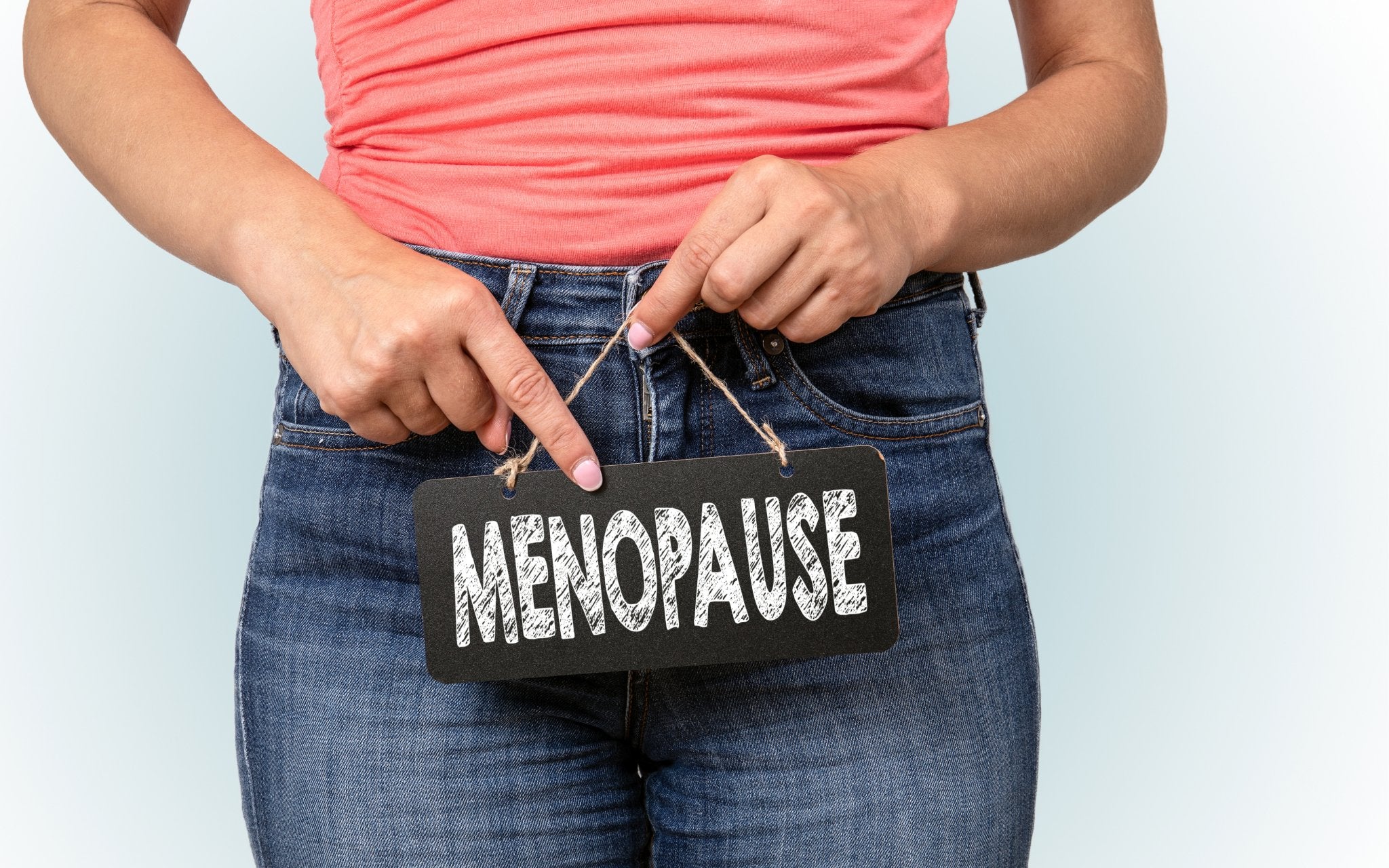Everything You Need to Know About UTIs During Menopause

What do hot flashes, mood swings, and urinary tract infections all have in common? You guessed it. A magical time called menopause.
Sarcastic? Us? Never.
Okay, so menopause may not be magical. But it is a completely natural part of every woman’s life. The average woman hits menopause at the age of 51 when she gets her last period, but symptoms can show up before, during, and after menopause, too. Hot flashes, night sweats, irritability, irregular periods, and weight gain are all signs that your menstrual cycle is about to stop spinning.
But one of the most frustrating symptoms of menopause has to be recurrent urinary tract infections (UTI). In a single year, about 10% of all postmenopausal women experience at least one UTI. Frequent UTIs are especially common in menopausal women because there are so many factors that make it easier for infections to come back with a vengeance.
If you’re struggling with menopausal UTIs (or if you think you might soon), here’s everything you need to know about spotting and preventing UTIs during menopause
Why do UTIs get more frequent with age?
Let’s start with urinary tract 101. Consisting of the kidneys, ureters, bladder, and urethra, the urinary tract is the system that removes excess fluid from your body (aka urine). Bacteria in the urinary tract is usually flushed out when we pee, but sometimes it sticks around and spreads. The result? A urinary tract infection.
As we age, UTIs become more common for a number of reasons. The bladder gets thinner and loses its elasticity, causing you to pee more often. The movement of urine from the bladder to the urethra is slower, leaving more time for bacteria to grab hold of tissue. And for many people, an ageing bladder also causes incontinence, which is a fancy word for losing control of your bladder.
There are different forms of incontinence, but almost all of them lead to pee leaking from the bladder. When this happens, bacteria from the urine can sneak into the urethra and cause infections.
Your pelvic muscles become weaker with age, too. Everyday activities like coughing or exercising could put a lot more pressure on your bladder than you’re used to. This also causes incontinence, which puts you at risk for getting frequent UTIs.
Why does menopause cause UTIs?
During menopause, your body goes through a total transformation. Think of it as puberty, but in reverse. All of these changes can create the perfect condition for bacteria to make its move.
Decrease in estrogen levels
Most notably, menopause causes estrogen levels to take a sharp decline. Estrogen is responsible for helping the good bacteria in the vagina thrive. It lowers the pH balance in the vagina and stops bacteria from taking over. Estrogen also keeps the floors of the urethra, vagina, and pelvis healthy.
With all of that responsibility, it’s no surprise that lower estrogen levels can cause major shifts all over the urinary tract.
Changes in the vagina and urethra
First, the vaginal walls can become thin, dry, and inflamed. In the medical world, this is known as vaginal atrophy. It gives bacteria easier access into the bladder, where it can set up shop and multiply. Lower estrogen levels can also change the acidity in the vagina and make its bacteria more concentrated.
The urethra goes through a menopause makeover, too. It becomes thinner and shorter, which means bacteria that lands in the urethra has a shorter trip up the urinary tract.
Changes in the bladder
While the ageing process naturally causes changes in the bladder, menopause can speed that process along. Some women experience bladder prolapse, which is when the bladder starts falling into the vagina. (Yep, you read that right). This causes bacteria to shift around and makes it harder to empty the bladder fully, leaving traces of bacteria behind to start spreading.
And since decreased estrogen makes the pelvic muscles weaker, you might have a hard time holding in your pee. That’s why over 40% of postmenopausal women experience incontinence.
How can I treat UTIs during menopause?
The most effective treatment for a UTI during menopause is antibiotics. If you’re experiencing UTI symptoms like sudden urges to pee, a burning sensation when you do, or cloudy or bloody urine, contact your doctor right away to get diagnosed and start treatment.
Antibiotic treatments usually last for 3 to 10 days. Most women start to feel better by day 3, but make sure to always finish your doctor-recommended dosage. If you stop antibiotics before you’re supposed to, bacteria can stick around and become resistant to future treatments.
How can I prevent UTIs during menopause?
We thought you’d never ask! Yes, menopause is prime time for UTIs to pop up and say hi. But that doesn’t mean you can’t take action before they do.
Menopausal or not, the first step to preventing UTIs is to drink plenty of water. Aim for 6 to 8 glasses of water per day to make sure you are peeing frequently and flushing unwanted bacteria out of your system.
Next, try not to strain while you pee. Stay relaxed and empty your bladder completely so that no urine is leftover. If you’re sexually active, always pee before and after sex to get rid of any bacteria that might be hiding in your urinary tract.
Many menopausal women will also ask their doctor for vaginal estrogen therapy. This can stop bacteria from spreading and soothe skin irritations caused by the hormonal roller coaster. In fact, multiple studies have shown that vaginal estrogen reduces recurrent UTIs more effectively than oral estrogen.
Vaginal estrogen is available as a topical cream, vaginal insert, or a flexible ring that is placed inside the vagina for 3 months. Talk to your doctor about what option might be best for you.
Most of all, consider taking a daily UTI prevention supplement. Utiva’s Cranberry PACs Supplement is clinically proven to stop bacteria from causing infection. Every dose is loaded with 36 mg of cranberry-derived PACs at 15% concentration - the highest on the market. Backed by science and doctor recommended, this all-natural supplement can help keep your menopause journey UTI-free.
Want to learn more about how to prevent UTIs as you age? Our Utiva Community is a safe space to talk about UTIs, menopause, and everything in between with experts, doctors, and other women who understand the struggle. Join now and stay educated on UTI prevention at www.utivahealth.com.
Knowledge is power
Sign up to our newsletter to keep learning!

- Choosing a selection results in a full page refresh.
- Opens in a new window.




